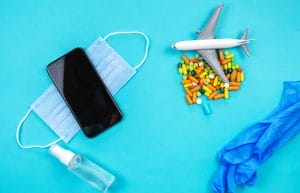Biopolymers in plastic surgery have become a growing trend raising concerns due to possible adverse effects on patients. From breast and buttock enhancements to complex extractions, patients have experienced a range of symptoms leading to autoimmune diseases. The meticulous MASK technique aims to remove biopolymer-compromised tissue, minimizing aesthetic sequelae and improving local and systemic symptoms for a better quality of life.
Overview of Biopolymers in Plastic Surgery
Introduction to Biopolymers
Biopolymers are increasingly being used in plastic surgery procedures due to their unique properties and versatility. These natural or synthetic substances offer a range of benefits that make them attractive for various applications in cosmetic and reconstructive surgery.
Utilization of Biopolymers in Plastic Surgery
The utilization of biopolymers in plastic surgery encompasses a wide array of procedures, including breast augmentation, butt lift, liposuction, rhinoplasty, facial fillers, and laser hair removal. Each procedure may involve different types of biopolymers tailored to the specific needs of the patient.
Trends and Concerns
Recent trends in the use of biopolymers in plastic surgery have raised concerns about potential risks and complications associated with these materials. The growing popularity of biopolymer procedures calls for a critical examination of their safety and efficacy to ensure positive outcomes for patients.
Common Procedures Using Biopolymers
Breast Augmentation
One of the most popular procedures using biopolymers is breast augmentation. This process involves the use of biopolymer injections to enhance the size and shape of the breasts, providing a more symmetrical and full appearance.
Butt Lift
Another common procedure utilizing biopolymers is the butt lift. This technique involves injecting biopolymers into the buttocks to achieve a fuller and rounder contour, enhancing the overall appearance of the posterior region.
Liposuction
Liposuction is a procedure that can also involve the use of biopolymers to remove excess fat deposits in various areas of the body, resulting in a more sculpted and toned physique. The inclusion of biopolymers in liposuction can help achieve smoother and more even results.
Rhinoplasty
Rhinoplasty, commonly known as a nose job, may also utilize biopolymers to enhance the shape and structure of the nose. Biopolymers can be injected to achieve desired changes in the nasal contours, providing a more proportionate and appealing appearance.
Facial Fillers
Facial fillers are another popular procedure in which biopolymers are commonly used. These fillers can help restore volume, smooth out wrinkles, and enhance facial features, resulting in a more youthful and rejuvenated appearance.
Laser Hair Removal
While not a typical procedure associated with biopolymers, laser hair removal may involve the use of biopolymer-based products to help reduce hair growth. This technique can provide long-lasting results and smoother skin texture for individuals seeking hair removal solutions.
Biopolymer-induced Human Adjuvant Disease (BHAD)
Symptoms and Diagnosis
Biopolymer-induced Human Adjuvant Disease (BHAD) manifests through a variety of symptoms that can be challenging to diagnose. Some common symptoms include inflammation, pain, and skin discoloration. It is crucial for healthcare professionals to conduct a thorough evaluation and consider the patient’s medical history when diagnosing BHAD.
Treatment Protocols
Treating BHAD requires a multidisciplinary approach to address both local and systemic effects of biopolymer exposure. Treatment may involve a combination of medication, surgical intervention, and supportive therapies tailored to each patient’s specific needs. Close monitoring and regular follow-up appointments are essential to track progress and adjust treatment strategies as needed.
The Meticulous Approach Safer and Keeper (MASK) Technique
The MASK technique is a specialized surgical approach designed to remove biopolymer-contaminated tissue effectively and safely. This meticulous procedure aims to minimize aesthetic complications, prevent further health issues, and improve overall patient well-being. Surgeons trained in the MASK technique follow strict protocols to ensure thorough removal of biopolymer deposits while optimizing cosmetic outcomes.
Importance of Biomarkers in BHAD
The role of biomarkers in Biopolymer-induced Human Adjuvant Disease (BHAD) is crucial in both diagnosis and treatment. Biomarkers help healthcare professionals identify specific markers in the body that indicate the presence of BHAD. This section will explore the significance of biomarkers in BHAD and their impact on clinical decision-making.
Role in Diagnosis and Treatment
- Biomarkers serve as indicators of BHAD presence
- They aid in early diagnosis and proactive treatment
- Help in monitoring patient response to treatment
- Guide healthcare providers in determining the effectiveness of interventions
Pachón Classification
- The classification system developed by Dr. Jaime Pachón et al. categorizes BHAD based on specific biomarkers
- Provides a framework for identifying and treating different types of BHAD
- Assists in tailoring treatment plans according to the biomarker profile of the patient
Clinical Decision-Making
- Biomarkers play a key role in guiding clinical decisions related to BHAD
- Help differentiate BHAD from other conditions with similar symptoms
- Inform treatment strategies and follow-up care
- Contribute to the overall management and long-term health outcomes of patients
The Future of Biopolymers in Plastic Surgery
The future of biopolymers in plastic surgery holds promise for advancements in research and development, as well as the implementation of strategies to ensure safer and more effective practices in the field. As technology continues to evolve, the use of biopolymers is expected to become more refined and targeted, with a focus on improving patient outcomes and minimizing risks.
Research and Development
Ongoing research and development in the field of biopolymers in plastic surgery are essential to drive innovation and improve patient care. Scientists and medical professionals are exploring new materials and techniques to enhance the safety and efficacy of biopolymer procedures, with a goal of developing biocompatible options that minimize adverse reactions and optimize results.
Exploration of Novel Biopolymer Materials
Researchers are actively exploring novel biopolymer materials that offer enhanced biocompatibility and durability. By experimenting with different compositions and structures, they aim to create biopolymers that are better tolerated by the body and less likely to trigger adverse reactions or complications.
Advancements in Biopolymer Delivery Systems
Advancements in biopolymer delivery systems are also being pursued to optimize the way biopolymers are administered and distributed in the body. Innovations in targeted delivery methods can improve precision and control, leading to more predictable outcomes and reduced risks for patients undergoing biopolymer procedures.
Strategies for Safe and Effective Practices
Ensuring safe and effective practices in the use of biopolymers in plastic surgery requires the implementation of comprehensive strategies that prioritize patient safety and well-being. Medical professionals are focusing on developing guidelines and protocols that promote best practices and minimize the potential for complications.
Enhanced Training and Education
Enhanced training and education for healthcare practitioners are key components of strategies for safe and effective biopolymer practices. By providing healthcare professionals with the necessary knowledge and skills, they can confidently perform biopolymer procedures with precision and competence, reducing the likelihood of adverse events.
Patient Screening and Consultation Protocols
Implementing robust patient screening and consultation protocols is essential to identify candidates who are suitable for biopolymer procedures. By conducting thorough evaluations and discussing potential risks with patients, healthcare providers can ensure informed decision-making and enhance patient safety throughout the treatment process.





